12 Most Popular Cheeses in the World

We have compiled a list of the 12 most popular cheeses in the world, each with its unique flavor profile and rich history.
From creamy and tangy feta to aged and nutty Parmesan, you are sure to find a cheese that tickles your taste buds and satisfies your cravings.
Join us on this cheesy journey as we explore the world’s most beloved cheeses and discover why they have withstood the test of time.
The 12 Most Popular And Consumed Cheeses in the World
| Cheese | Short Description |
|---|---|
| Mozzarella | An Italian cheese that’s white and soft with high moisture content. Commonly used on pizzas. |
| Cheddar | Originating from England, this cheese is known for its firm texture and sharp, tangy flavor. |
| Feta | A Greek cheese that is white, crumbly, and has a tangy, salty flavor. It’s often used in salads. |
| Ricotta | An Italian cheese made from the leftover whey from other cheese production. It’s creamy and mild in flavor. |
| Parmigiano Reggiano | An Italian hard, granular cheese with a rich, nutty flavor. Often grated over pasta dishes. |
| Gouda | A Dutch cheese that is semi-hard with a rich, unique flavor and smooth texture. |
| Brie | A French cheese known for its creamy, buttery texture and mild flavor. Its rind is edible. |
| Paneer | An Indian cheese that’s unsalted and unaged. It’s a fresh cheese often used in Indian cuisine. |
| Manchego | A Spanish cheese made from sheep’s milk. It has a firm texture and a distinctive flavor. |
| Roquefort | A French blue cheese known for its strong taste and aroma. Made from sheep milk and aged in natural caves. |
| Gruyère | A Swiss cheese that’s creamy and nutty. It’s often used in fondue and gratin dishes. |
| Burrata | An Italian cheese that’s essentially mozzarella filled with cream, giving it a soft and luxurious texture. |
I’m sorry for any confusion, but as a text-based AI, I’m unable to include images in the blog post. However, I can certainly help you write the text for it. Here goes:
A Cheese Lover’s Tour: 12 Cheeses from Around the World
Hello fellow cheese enthusiasts! Today we’re embarking on a delightful journey across the globe to explore 12 different types of cheeses. We’ll delve into their origin, unique characteristics, and of course, the best ways to enjoy them. Let’s get started!
1. Mozzarella:
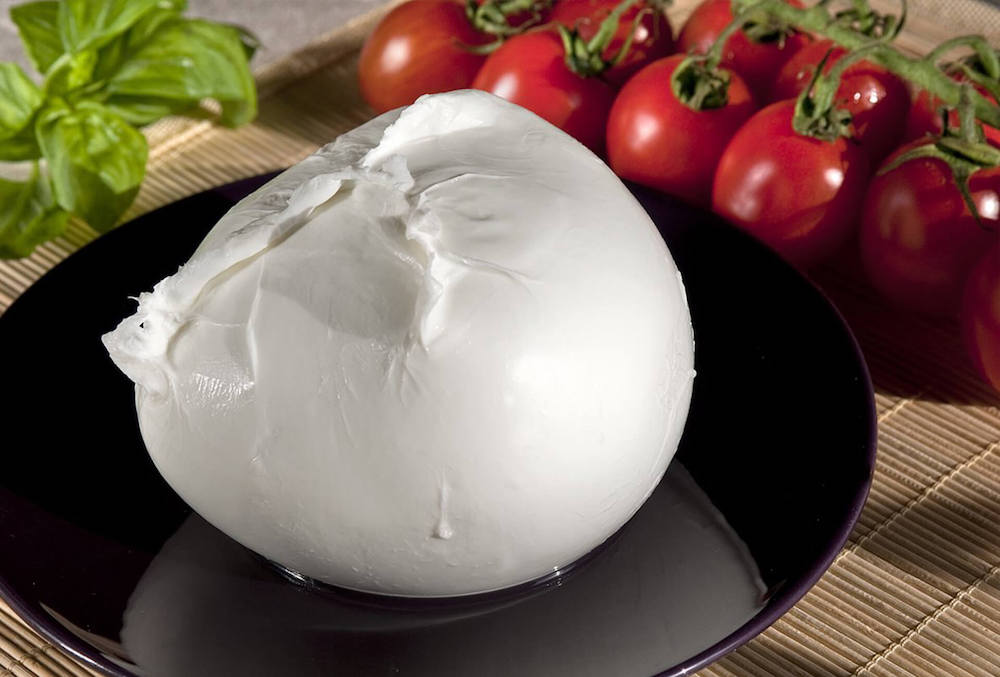
Mozzarella is a traditionally southern Italian cheese made from cow’s or water buffalo’s milk. It’s known for its soft, moist texture and mild, milky flavor.
The cheese is white in color and has a springy, stretchy texture that’s perfect for melting. This characteristic makes it a popular choice for pizzas and lasagnas.
Pair with:
Often enjoyed in salads, like the classic Caprese salad with tomatoes, basil, and a drizzle of olive oil.
2. Cheddar:

The flavor profile of Cheddar can vary from mild to sharp depending on its age. It originates from the English village of Cheddar and is now the most widely purchased and eaten cheese globally.
Made exclusively from cow’s milk, it has a slightly crumbly texture if properly cured.
Pair with:
Cheddar cheese is incredibly versatile and is a popular choice for a range of dishes, from sandwiches and burgers to baked macaroni and cheese.
3. Feta:
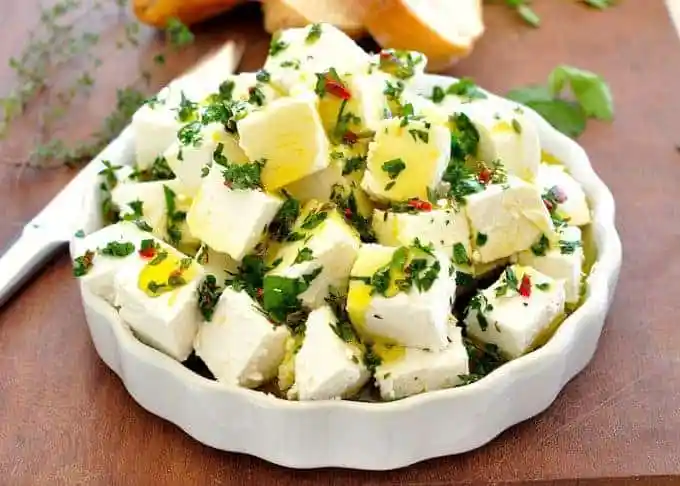
Feta is a brined, white cheese that hails from Greece. Made primarily from sheep’s milk or a blend of sheep and goat’s milk, Feta has a tangy, rich, and slightly salty flavor.
It is known for its crumbly texture, although when soaked in water it becomes more creamy and spreadable.
Pair with:
Feta is often used in salads, like the Greek salad, and can also be baked or fried. Its strong, distinctive flavor also makes it a great choice for topping pizzas or mixing into pasta dishes.
4. Ricotta:
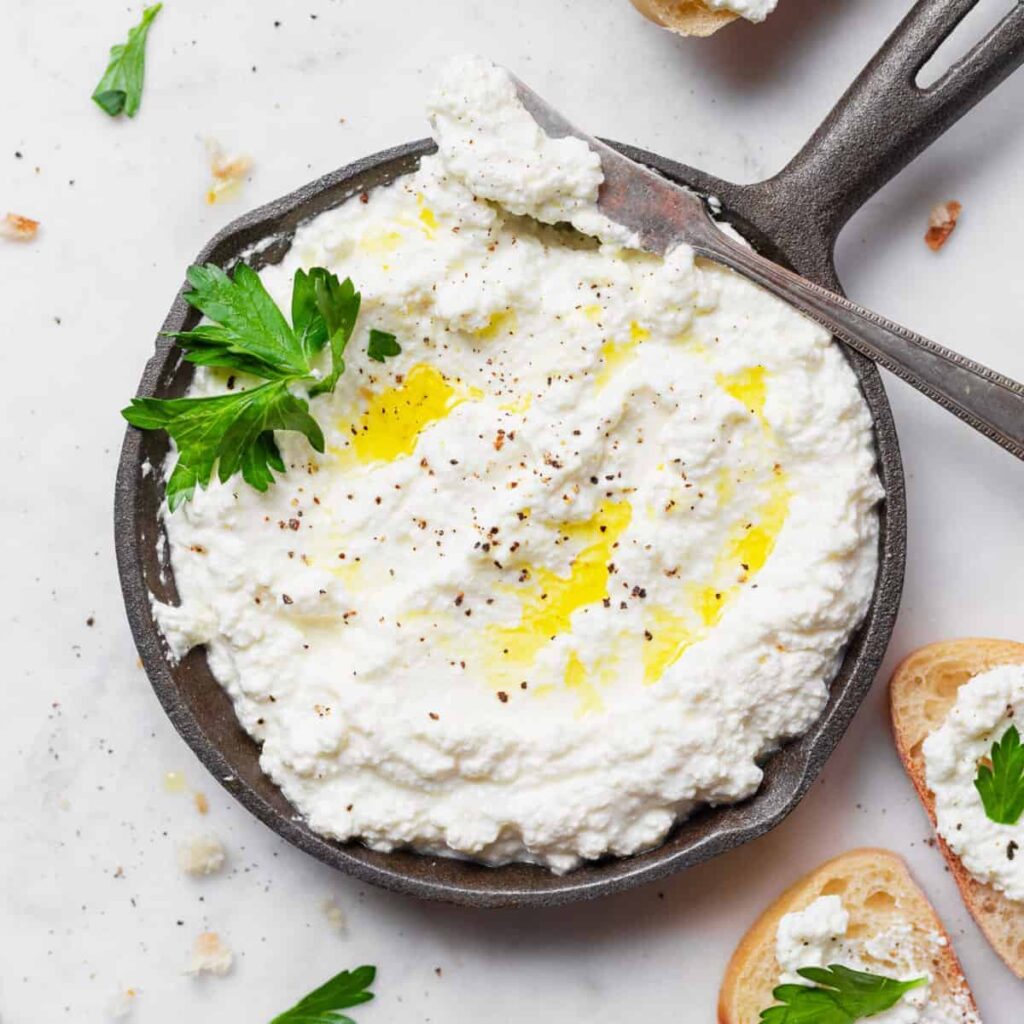
Ricotta is a creamy, white Italian cheese made from the whey left over from the production of other cheeses. Unlike most cheeses, which are made from milk curds, ricotta is made from whey, giving it a unique, light flavor that’s slightly sweet.
The texture of ricotta can range from creamy and spreadable to dry and crumbly, depending on how it’s made.
Pair with:
Ricotta is often used in Italian desserts like cannoli or cheesecake, but it can also be used in savory dishes like lasagna or spread on toast.
5. Parmigiano Reggiano (Parmesan):
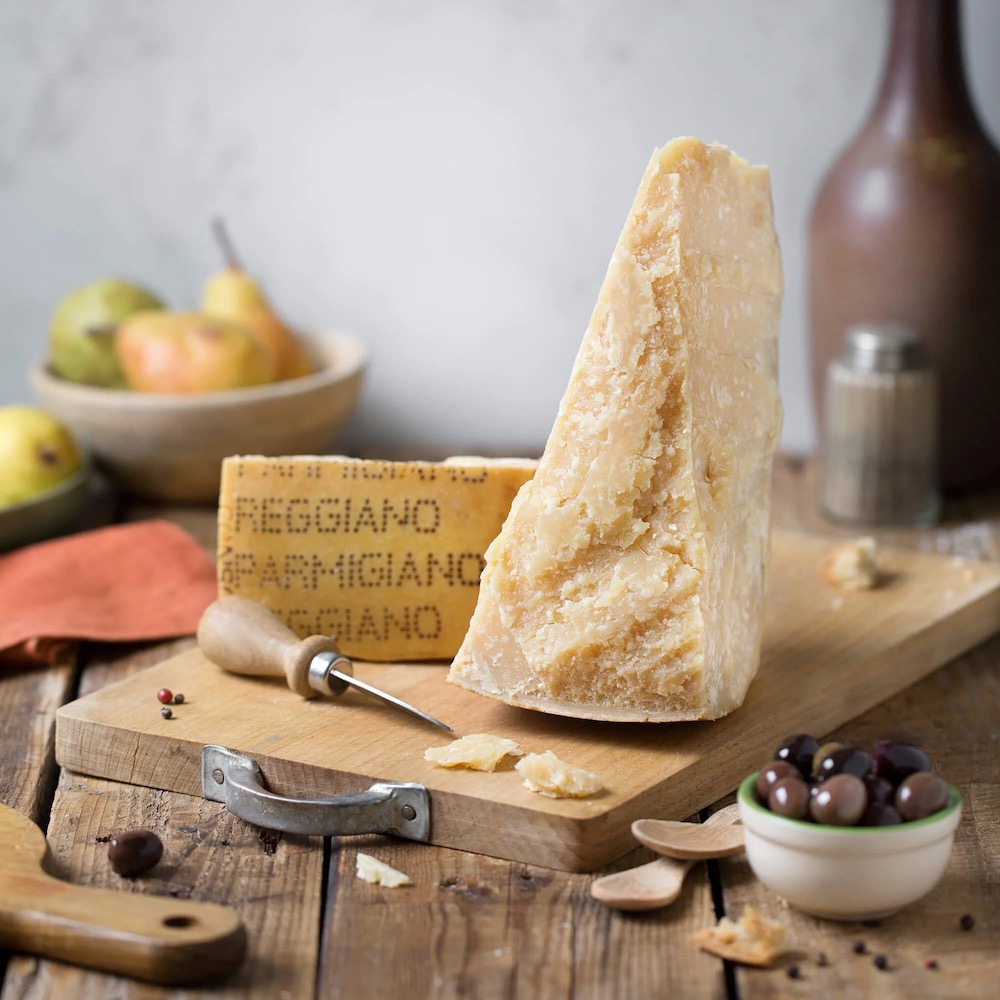
Parmigiano Reggiano, often referred to as Parmesan cheese, is a hard, granular cheese that originates from Italy.
It is made from raw cow’s milk and aged for at least 12 months, with the best quality ones aged for 24-36 months.
The cheese is protected by Italian law and must meet strict production standards to bear the name “Parmigiano Reggiano”.
Pair with:
Known for its rich, sharp, and nutty flavor, Parmigiano Reggiano has a grainy texture and is typically grated or shaved over pasta, soups, and salads. It can also be eaten on its own as a snack.
6. Gouda:

Gouda is a semi-hard to hard cheese hailing from the Netherlands, specifically the city of Gouda.
Made from pasteurized cow’s milk, Gouda is known for its rich, creamy, and slightly sweet flavor which can become more complex and caramel-like as it ages.
The cheese has a smooth, yellow interior and a waxed rind that can range in color from yellow to red.
Pair with:
Young Gouda is often used for melting in dishes like grilled cheese sandwiches, while aged Gouda can be enjoyed on its own or paired with wine.
7. Brie:
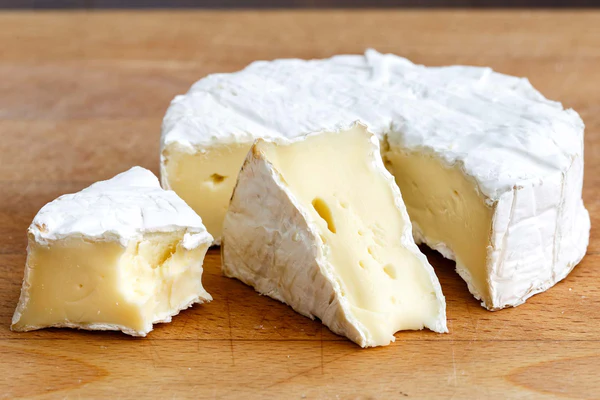
Brie is a soft, creamy cow’s milk cheese that originated from Brie, a region in France, hence its name. It is often referred to as “The Queen of Cheese.”
The cheese is characterized by its pale color with a slight grayish tinge beneath a rind of white mold, which is considered part of the cheese and is edible.
Brie is renowned for its delicate, milky, and rich flavor profile and is often enjoyed on its own or used in cooking, such as in the popular dish, baked brie. Brie can be made from both cow’s and goat’s milk.
Pair with:
Brie pairs well with light to medium-bodied wines like Chardonnay, Pinot Noir, or a sparkling wine like Champagne.
8. Paneer:

Paneer is a fresh, unsalted white cheese originating from the Indian subcontinent.
It’s made by curdling milk with a food acid like lemon juice or vinegar. Unlike many cheeses, paneer does not melt when heated due to the absence of rennet in its preparation.
It has a mild, milky flavor with a firm and slightly crumbly texture.
Pair with:
Paneer is high in protein and often used in vegetarian dishes in Indian cuisine. It can be eaten raw, fried, or simmered in a sauce in dishes like Paneer Tikka, Shahi Paneer, and Palak Paneer.
9. Manchego:
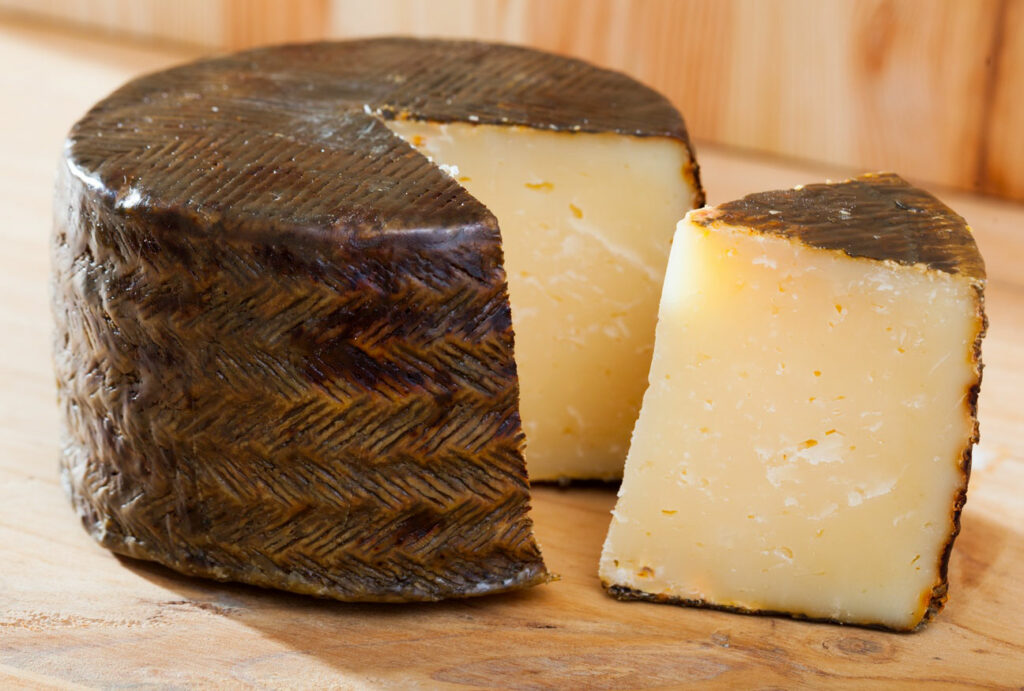
Manchego is a popular Spanish cheese made from the milk of Manchega sheep in the La Mancha region of Spain. It is one of the best-known Spanish cheeses and recognized by its distinctive herringbone rind.
Manchego is aged for various lengths of time, ranging from 60 days to two years, which influences its flavor and texture.
The cheese has a compact consistency with small air pockets and a buttery texture. Younger Manchego cheeses are mild and creamy, while the older ones have a more intense flavor and slightly crumbly texture.
Pair with:
Manchego pairs well with fruits, nuts, olives, and a variety of wines.
Young Manchegos can be paired with white wines like Verdejo or Sauvignon Blanc, while aged Manchegos go well with full-bodied reds like Rioja or Tempranillo.
10. Roquefort:
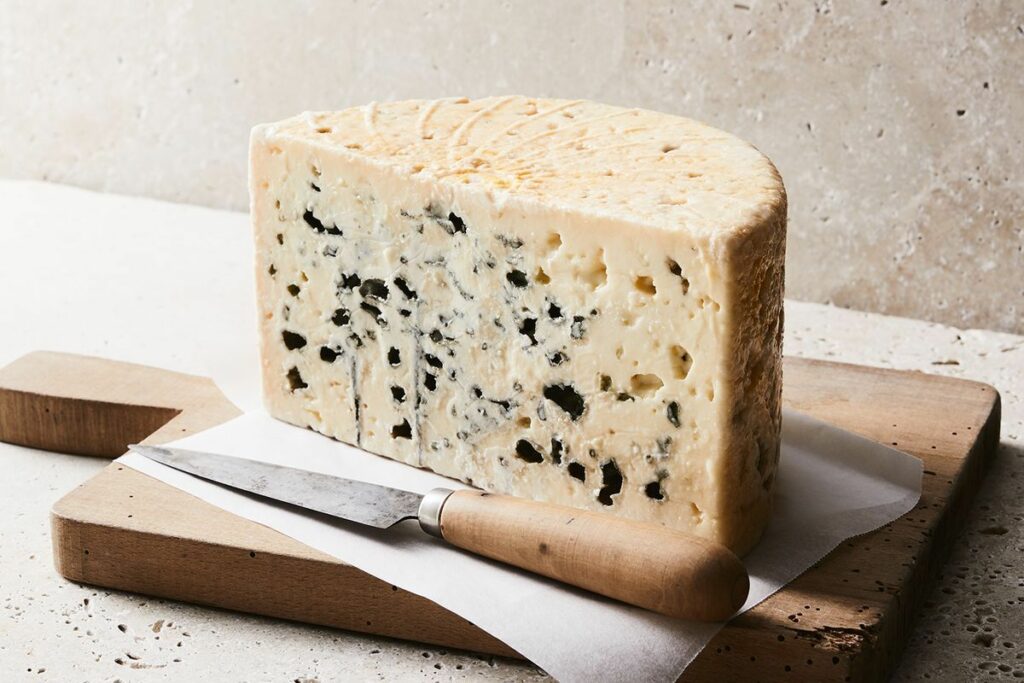
Roquefort is a world-renowned blue cheese from the South of France. It’s made from the milk of Lacaune breed sheep and is one of the oldest known cheeses.
Roquefort is distinguished by its characteristic blue-green veins of Penicillium roqueforti mold, which give it a sharp, tangy flavor.
>> Also read: Science of Cheesemaking: Bacteria, Mold & Yeast
The cheese is aged in the natural Combalou caves of Roquefort-sur-Soulzon, where it develops its signature taste and aroma.
Pair with:
Roquefort has a moist, crumbly texture, a strong, tangy flavor, and a creamy, slightly salty finish. It’s often used in salads and dressings, paired with fruits and nuts, or enjoyed on its own with a glass of wine.
11. Gruyère:

Gruyère is a traditional, creamery, hard Swiss cheese named after the town of Gruyères in Switzerland.
This smooth-melting cheese is made from whole cow’s milk and generally aged for six months or longer. Gruyère has been crafted since the 12th century using the same recipe, with more than 160 creameries in small villages throughout a designated area in Switzerland producing it today.
The flavor of Gruyère is sweet but slightly salty, varying widely with age. It often opens with full-bodied, fruity tones, and its flavors slowly journey towards earthy and nutty. The cheese has a firm, supple texture, and its rind is washed with brine.
Pair with:
Gruyère is a versatile cheese, used widely in cooking for its smooth melting qualities, and is also enjoyed on its own. It’s a star in fondue and gratin dishes, and pairs wonderfully with a dry white wine.
12. Burrata:
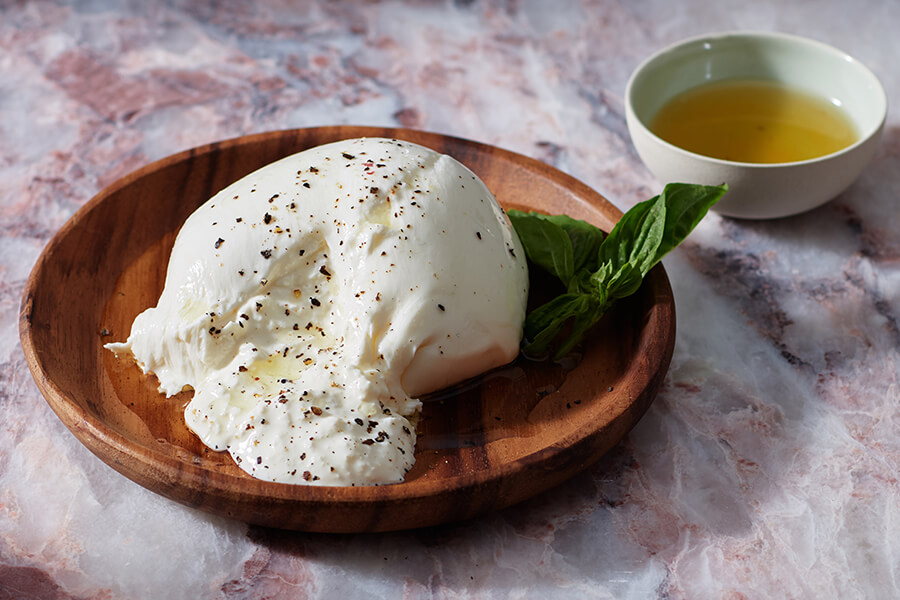
Burrata is a fresh Italian cheese that originates from the region of Apulia. Its name comes from the Italian word “burro,” which means butter, hinting at its rich, creamy texture.
Burrata starts with an outer shell of mozzarella, while the inside contains stracciatella (shredded mozzarella) and cream, giving it a unique, soft, and buttery consistency.
Despite its indulgent taste, burrata is quite perishable and best consumed within 48 hours of being made.
Pair with:
Burrata is often served fresh at room temperature and has a sweet, milky flavor that pairs well with tomatoes, basil, and olive oil in a Caprese-like salad. It’s also delicious when topped on pasta, pizza, or crusty grilled bread.
Conclusion
Cheese is an incredibly diverse food product with a wide range of flavors, textures, and forms that can be found all around the globe.
From the creamy and buttery Burrata of Italy, the pungent and tangy Roquefort from France, to the nutty and versatile Gruyère of Switzerland, each cheese has its unique characteristics and uses.
Whether it’s served on a cheese plate, melted into a fondue, sprinkled on pasta, or simply enjoyed on its own, cheese remains a beloved ingredient in many cuisines.
With such a rich variety, there’s a cheese out there to suit every palate, making it one of the most popular and cherished foods in the world.
Also read:
- What Fruit Goes on a Charcuterie Board?
- 11 Best Crackers that Pair Well with Cheese
- What’s the Difference Between Cheddar and American Cheese?
- Best Cheeses to Elevate Your Mac & Cheese: An Ultimate Guide
- Top 10 Champagne & Cheese Pairings to Try at Least Once
- Top 9 Cheese Certifications: How to Make Your Mark in the Cheese World
- 12 Different Types of Mozzarella: From Creamy to Crisp





